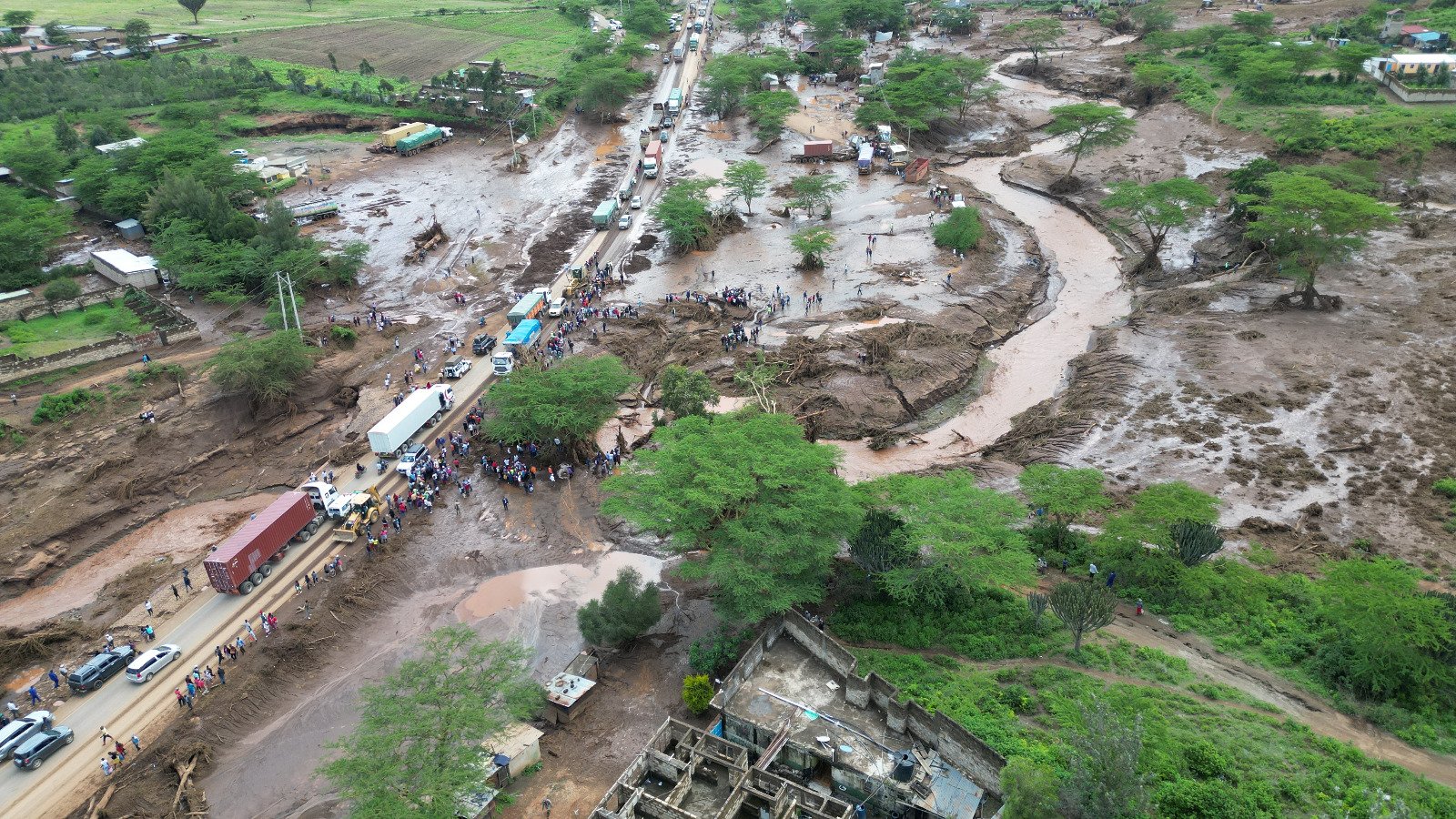

Months of heavy rain due to seasonal monsoons and rainy seasons led to riverine and flash flooding, deaths, and displacement in several East African countries, including Kenya, Ethiopia, Uganda, Tanzania, Burundi and Somalia.
At least 1.6 million people were affected, 473 died and more than 410,000 were displaced.
Cyclones Hidaya and IALY hit the region in May, worsening the flooding and causing increased death and destruction in Tanzania and Kenya. Cyclones rarely reach this area, yet twice in a month, record-breaking Indian Ocean cyclones formed and affected the region.
The flooding, coming after years of drought, has increased overall displacement in Eastern Africa and exacerbated acute food insecurity, disease outbreaks and damage to infrastructure. In May, UN OCHA indicated that more than “48.1 million people, mainly in Ethiopia, Kenya, Somalia, South Sudan and Sudan, were projected to face acute food insecurity by July 2024.”
Despite high levels of need, there is an underwhelming response to the various humanitarian appeals. This reduces the ability of nongovernmental organizations to provide appropriate levels of response.
(Photo: Flood damage in town of Mai Mahiu in Nakuru County, Kenya, April 29, 2024. Credit: Kipchumba Murkomen, Cabinet Secretary for Roads, Transport, and Public Works in Kenya via X)
Latest Updates
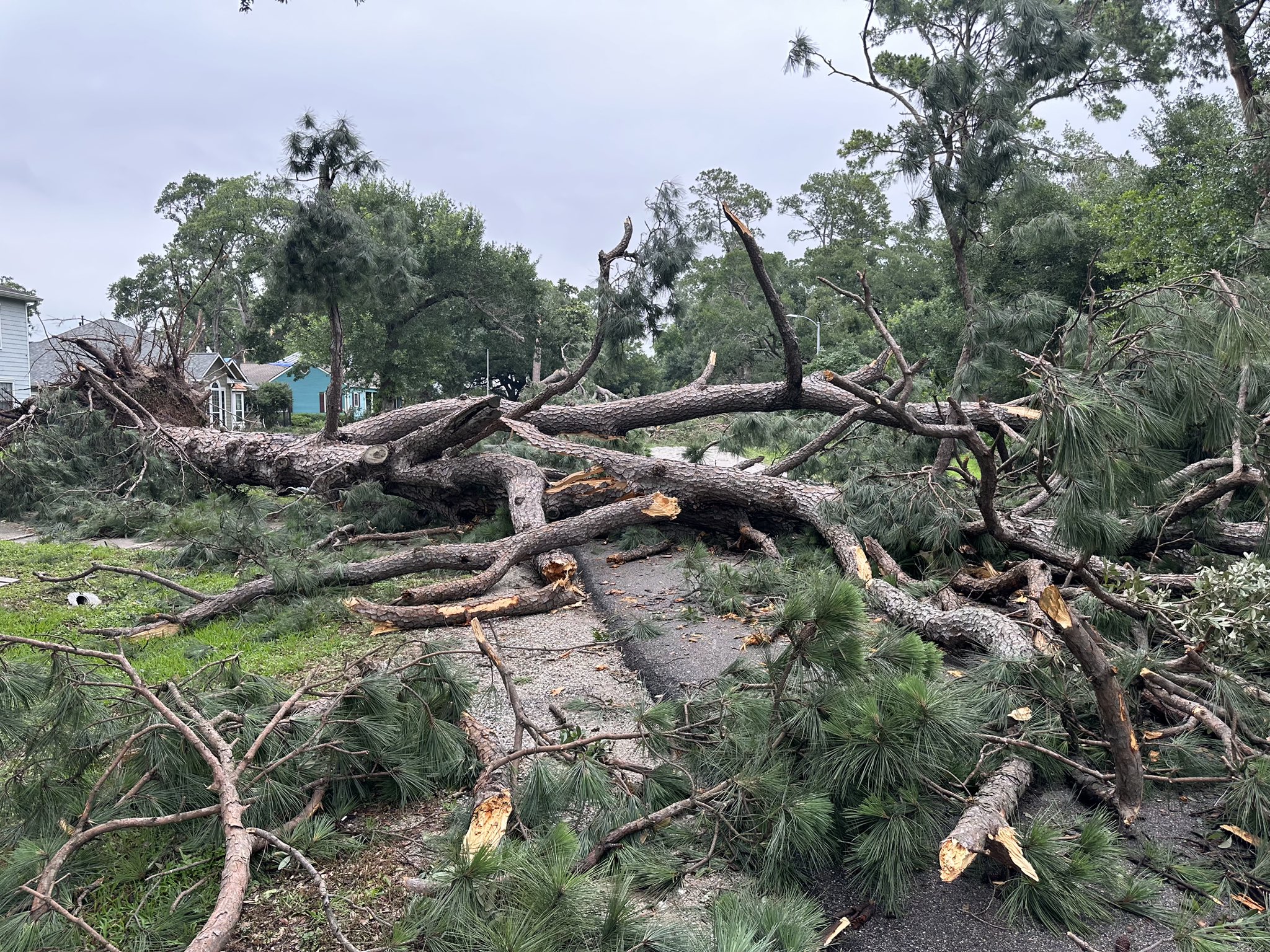
What we’re watching: Weekly disaster update, May 20
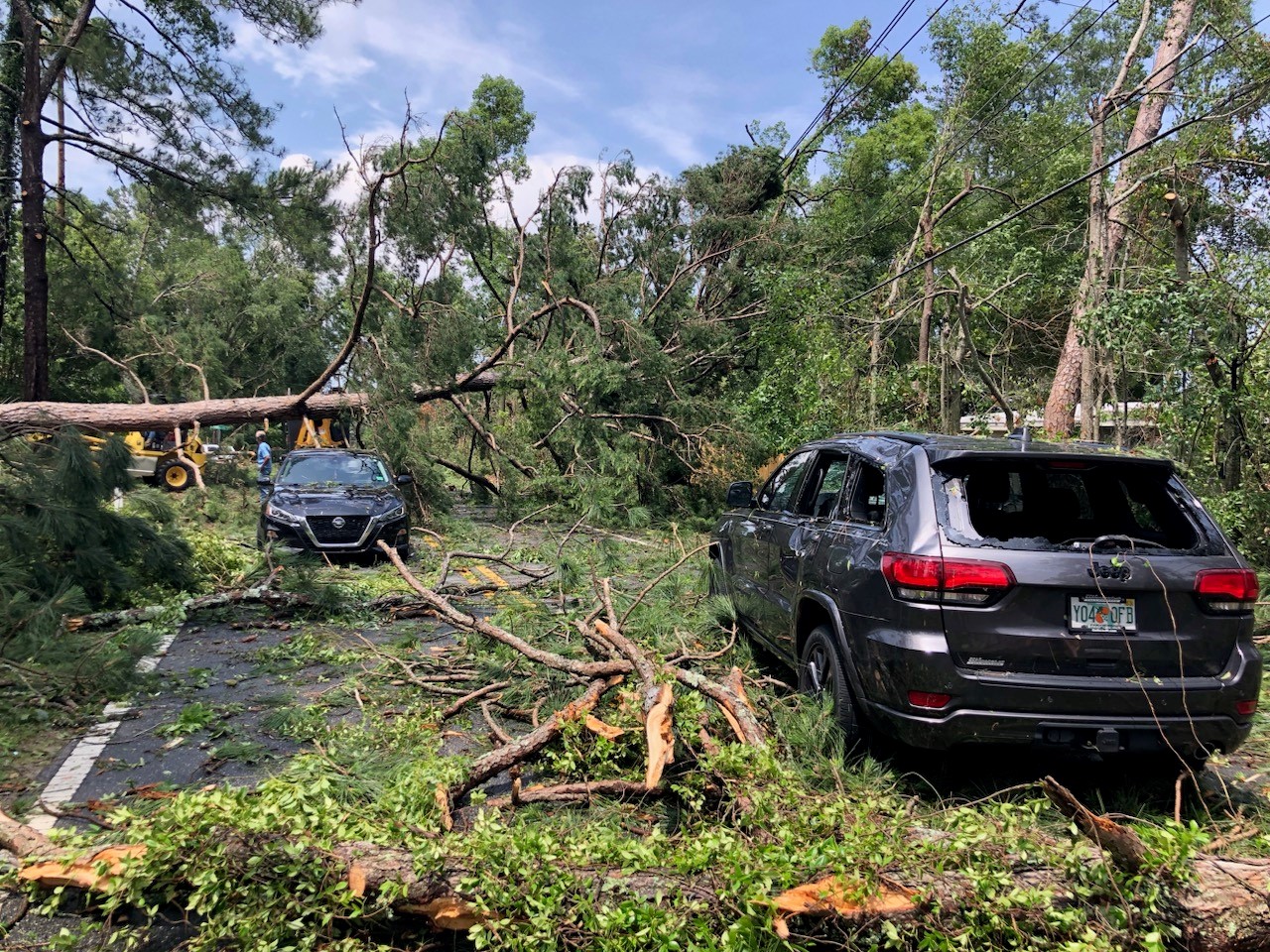
What we’re watching: Weekly disaster update, May 13

What we’re watching: Weekly disaster update, May 6
Key facts
- According to the United Nations Office for the Coordination of Humanitarian Affairs (UNOCHA) as of May 17, 2024:
- At least 473 people died. Over half of the deaths (291) were in Kenya, with at least 155 people in Tanzania and 49 people in Uganda.
- An estimated 1.6 million people were affected, including 560,000 in Ethiopia, 412,760 in Kenya, 239,780 in Burundi, 225,760 in Somalia, 126,000 in Tanzania and 40,000 in Ethiopia.
- At least 410,000 people were displaced although some have been able to return home because of extended dry spells.
- Across the region, food, shelter, non-food items, health support and WASH remain significant needs.
Cyclone IALY
Generally, cyclones form at least 300 miles away from the equator. Cyclone IALY transformed from a storm to a cyclone in the south-west Indian Ocean basin less than 190 miles from Mombasa. It was the most northerly cyclone ever formed below the equator.
IALY dissipated on May 22 around 4:00 p.m. local time. It was the strongest cyclone to get that close to the equator in eight years.
While Cyclone IALY stayed more than 90 miles offshore, winds reached the Kenyan Kilifi coastal region on May 21, injuring six people and killing two others, including a four-year-old girl. It is the strongest cyclone to ever get that close to Kenya.
Kenya’s proximity to the equator means the country typically does not experience direct hits but rather may feel the effects of the winds and rain from a cyclone, typically at the strength of a tropical depression.
Even as IALY approached, Tanzanian, Kenyan and Somalian authorities were only warning of a “moderate tropical storm.”
Rainy seasons and drought
Each country has a rainy season, with varying dates. For example, the “long rains,” as they are known, occur annually in Kenya and Tanzania from March to May. In Somalia, the Gu rains fall between April and June, with the Deyr rains between October and December. This region is extremely susceptible to climate change, and the El Niño climate pattern compounded this year’s rains.
Years of drought, which hardened the soil, also compounded the effects of the rains, increasing the impact of the flooding. While some people were able to return home, many remained in displacement camps or with families in June.
For more information about seasonal weather patterns and the impact of drought and monsoon rains, read this article from Voice of America.
Cyclone Hidaya
Cyclone Hidaya hit the region on May 4, increasing rains and flooding but not causing as much damage in Kenya or Tanzania as feared. It made landfall on Mafia Island on Tanzania’s Mafia Islands Archipelago in the Indian Ocean before quickly dissipating. Two people died in Tanzania because of the cyclone and seven were injured. Additionally, more than 2,000 homes were flooded, damaged or destroyed, and 18,862 individuals were affected.
Hidaya was the strongest cyclone ever to hit Tanzania, according to Africa News. The Tanzanian Meteorological Authority (TMA) reported heavy downpours along the coast on May 4, with over 3.5 inches of rain reported in Mtwara. This was more than twice the amount of rain that typically falls in May.
Internal displacement and refugees
Internal and external displacement is of significant concern to UNHCR as thousands of people were forced to move, sometimes repeatedly, due to the flooding. This has also meant that displaced people are sometimes forced to share tents increasing risks of communicable diseases and increasing protection risks.
Across the region, more than 400,000 people were displaced, including some who were already displaced. UNHCR said, “Some of the worst damage has been done in the poorest most congested parts of cities and towns where infrastructure is fragile, drainage inadequate, and homes flimsy, as well as in refugee and displacement camps.”
Infrastructure damage (including livelihoods)
Local media reported extensive damage to thousands of homes across the region. While governments conducted assessments to determine the extent of the damage and build camps, affected families resorted to makeshift shelters or living in schools or with family and friends.
UNHCR, the UN Refugee Agency, reported that rental prices increased dramatically in Kenya, making it very difficult for people to find a place they can afford.
There was a significant impact on livelihoods, especially small businesses, pastoralists and agro-pastoralists. In Kenya, nearly 12,000 livestock were killed, nearly 48,000 acres of land for crops flooded and more than 1,000 small businesses were affected. In Burundi, UNHCR reported that 10% of the farmland was lost.
The National Disaster Operations Centre in Kenya reported a critical situation with the waterways and dams across the country with all seven of its hydroelectric dams overtopped at one point.
Vulnerable communities
Children lost access to education for several weeks due to people taking shelter in educational facilities and buildings damaged or inaccessible due to flooding.
In addition to education, approximately 18% of children regionally are at risk of malnutrition. With disasters often resulting in worse health outcomes, government authorities and humanitarian partners were concerned about the health and nutritional situation of children due to the floods.
Humanitarian aid partners and government officials conducted search and rescue operations, and provided immediate life-saving assistance to affected communities. Humanitarian partners have called for the urgent scale up of multi-sectoral response to address immediate needs.
Current needs include shelter, food and non-food items, health care, water, sanitation and hygiene (WASH) and other essential supplies.
Cash assistance
As with most disasters, experts recommend cash donations, which allow on-the-ground agencies to direct funds to the greatest area of need, support economic recovery and ensure in-kind donation management does not detract from disaster recovery needs.
Many people lost everything in the floods. Direct cash assistance allows families to purchase items and services locally that address their multiple needs. It gives each family flexibility and choice, ensuring that support is relevant and timely. Cash assistance can also help move families faster toward rebuilding their lives.
Climate adaptation and mitigation
As with many other recent natural hazards, climate change has played a significant role in the floods. East Africa is particularly vulnerable to more intense climate risks which can have a detrimental impact on the region. Marginalized, displaced and otherwise vulnerable populations in these countries face the biggest impacts from climate change.
Funders can help address these issues by investing in preparedness, mitigation, risk reduction and climate adaptation. It is important that this funding be made available to meet the needs of the most marginalized people.
Critical infrastructure
Extensive clean-up is required for the immediate effects of the flooding. Transportation infrastructure was also affected, and roads and bridges will need repair. The governments have not yet been able to fully calculate the damages, but the losses have been significant.
In addition, the damage to the roads and transportation infrastructure has led to increased prices. It has challenged the ability of governments and humanitarian organizations to carry out both search and rescue and delivery of supplies.
Health care support
During natural hazard events, health care needs may increase and result in the outbreak of diseases, especially waterborne and infectious diseases.
Reduced access to water and sanitation because of damage to water sources and WASH facilities, including latrines, increases the risk of diseases such as cholera. On June 6, UN OCHA reported 34,500 cholera cases between January and May 2024. Somalia and Ethiopia saw the largest impacts, with the floods worsening the existing cholera outbreak.
The WHO reported at least 13,814 cases, including 122 deaths, as of May 26 in Somalia. In Ethiopia, there have been 17,823 cases and 131 deaths as of June 9.
There have also been 21,400 measles cases, including 17,000 cases in Ethiopia.
Increased displacement means humanitarian partners must ensure they can reach affected communities. This includes mobile clinics for those on the move or tailored services and assistance that meet the needs and priorities of affected communities. Infection prevention and control and treatment measures need to be prioritized for funding. Additionally, funders can support rebuilding WASH infrastructure and supporting access to hygiene needs to help reduce the outbreaks of water-borne diseases.
Long-term recovery
Long-term recovery needs include long-term shelter or rebuilding of homes and community infrastructure, livelihood restoration and economic recovery. Many of the areas affected were already extremely vulnerable because of other hazards, including drought. Progress made toward recovering from recent years of drought has been washed away for many people.
The response to the 2022 Pakistan floods, which devastated large swaths of the country, provided key lessons that promote the need for government and communities to collectively engage in clear priorities, such as rebuilding livelihoods and buildings for long-term recovery.
Protection
After a disaster, protecting vulnerable individuals and ensuring access to their basic rights are immediate priorities. Gender-based violence, including sexual assault and trafficking of vulnerable populations, and the protection and security of children are often a concern.
Rebuilding and reconstruction of homes
Where possible, rebuilding should focus on building more resilient homes and buildings, improving the quality of construction and investing in flood-resistant repair techniques.
Funders can assist by providing support to affected refugee and IDP camps, addressing temporary living situations, and rebuilding homes.

CDP has a Global Recovery Fund that provides an opportunity for donors to meet the ongoing and ever-expanding challenges presented by global crises. Select “East Africa Floods and Cyclone” from the dropdown menu.
Contact CDP
Philanthropic contributions
If you have questions about donating to the CDP Global Recovery Fund, need help with your disaster-giving strategy or want to share how you’re responding to this disaster, please contact development.
(Photo: Kenyan President William Ruto visited Ngeya Girls Secondary School in Mai Mahiu, Nakuru County, Kenya to survey damage and console families affected by flash flooding, April 30, 2024. Credit: William Samoei Ruto via X)
Recovery updates
If you are a responding NGO, please send updates on how you are working on recovery from this disaster to Tanya Gulliver-Garcia.
We welcome the republication of our content. Please credit the Center for Disaster Philanthropy.
Philanthropic and government support
The Kenyan government announced a billion shillings package ($7.5 million) to rehabilitate almost 2,000 schools affected by the floods.
The Kenya Red Cross quickly mobilized through prompt emergency responses, search and rescue missions, and the distribution of shelter kits and essential supplies. As of May 14, almost 30,000 non-food water, health and sanitation (WASH) kits were distributed and reached almost 11,500 people through health outreaches.
The Emergency Relief Coordinator allocated $3 million from the UN Central Emergency Response Fund (CERF) to scale up flood responses and the provision of immediate life-saving assistance to 150,000 people.
The International Federation of Red Cross and Red Crescent Societies (IFRC) approved an additional allocation of CHF 250,000 ($275,000), which is the fourth allocation for the Tanzania Floods and Landslides Emergency Appeal. The total loan for the appeal now stands at CHF 750,000 ($825,000). The IFRC and its membership are seeking CHF 4 million (about US $4.4 million) to support the Tanzania Red Cross Society to reach 75,000 people with life-saving assistance.
More ways to help
CDP has also created a list of suggestions for foundations to consider related to disaster giving. These include:
- Take the long view: Even while focusing on immediate needs, remember that it will take some time for the full range of needs to emerge. Be patient in planning for disaster funding. Recovery will take a long time and funding will be needed throughout.
- Recognize there are places private philanthropy can help that government agencies might not: Private funders have opportunities to develop innovative solutions to respond to and help prevent or mitigate future disasters that the government cannot execute.
- All funders are disaster philanthropists: Even if your organization does not work in a particular geographic area or fund immediate relief efforts, you can look for ways to tie disaster funding into your existing mission. If you focus on education, health, children or vulnerable populations, disasters present prime opportunities for funding.
- Ask the experts: If you are considering supporting an organization that is positioned to work in an affected area, do some research. CDP and InterAction can provide resources and guidance about organizations working in affected communities. The Council on Foundations provides Country Notes for countries to help foundations understand giving requirements, laws and regulations in various countries.
Fund resources
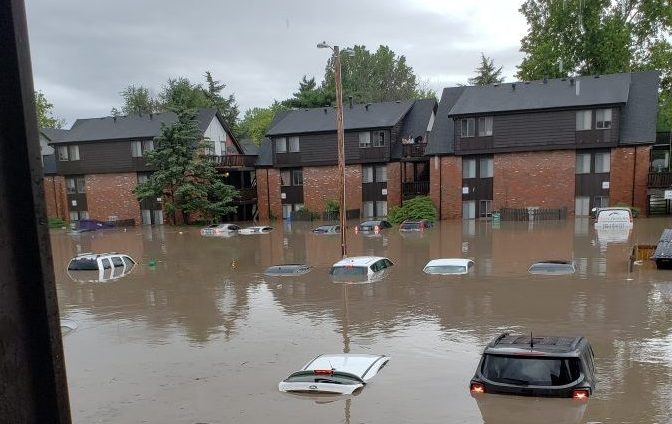
Floods
Flooding is our nation’s most common natural disaster. Regardless of whether a lake, river or ocean is actually in view, everyone is at some risk of flooding. Flash floods, tropical storms, increased urbanization and the failing of infrastructure such as dams and levees all play a part — and cause millions (sometimes billions) of dollars in damage across the U.S. each year.

Monsoon Seasons
While often thought of as long-term heavy rain over a specific area, a monsoon is actually the name for a seasonal change in the direction of the prevailing winds. It can bring either extremely wet or extremely dry weather to an area.
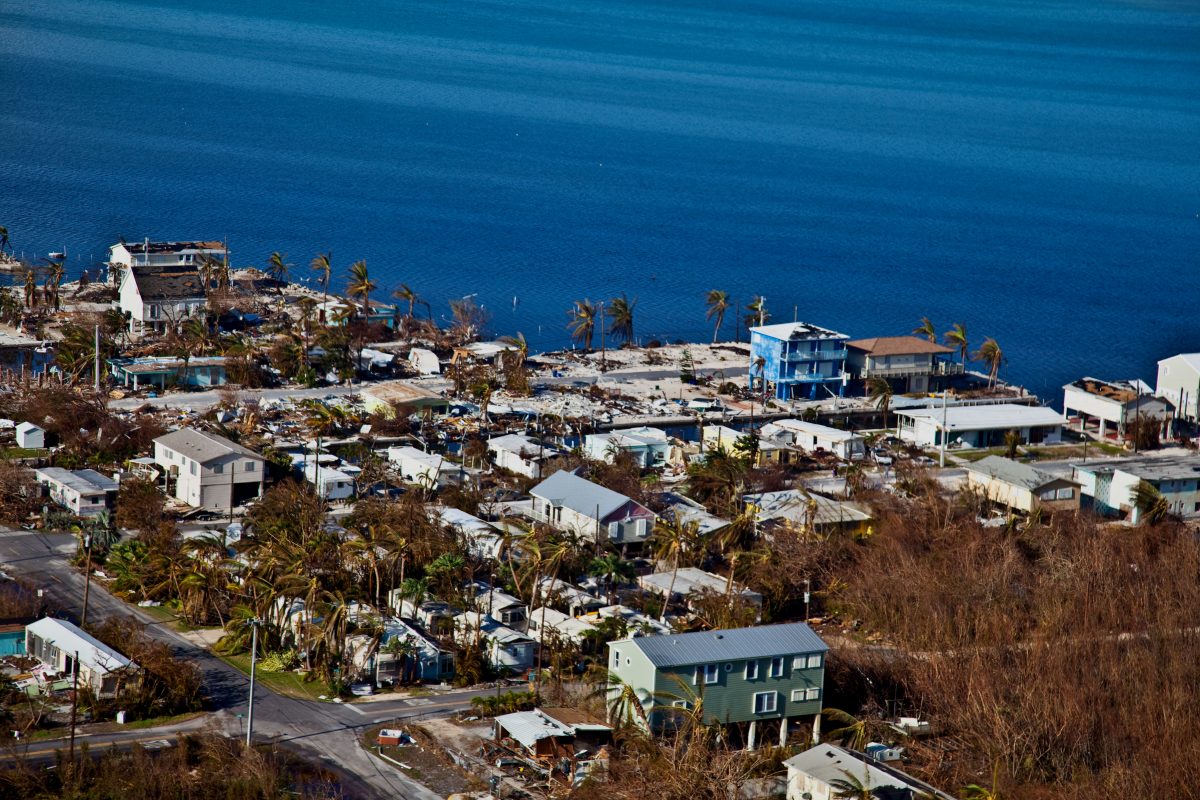
Hurricanes, Typhoons and Cyclones
Hurricanes, also called typhoons or cyclones, bring a triple threat: high winds, floods and possible tornadoes. But there’s another “triple” in play: they’re getting stronger, affecting larger stretches of coastline and more Americans are moving into hurricane-prone areas.